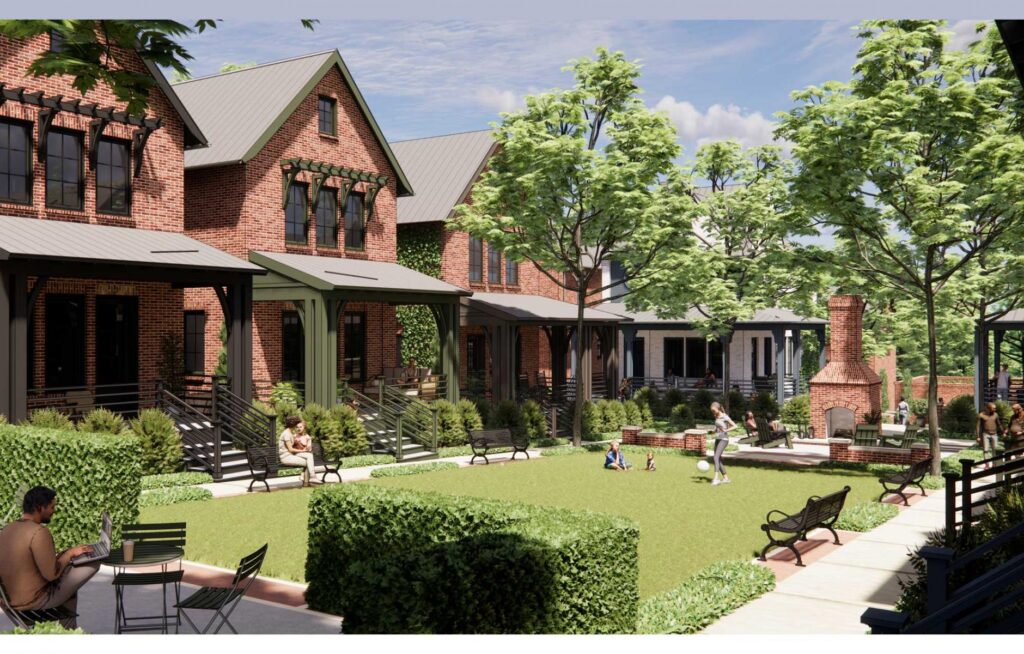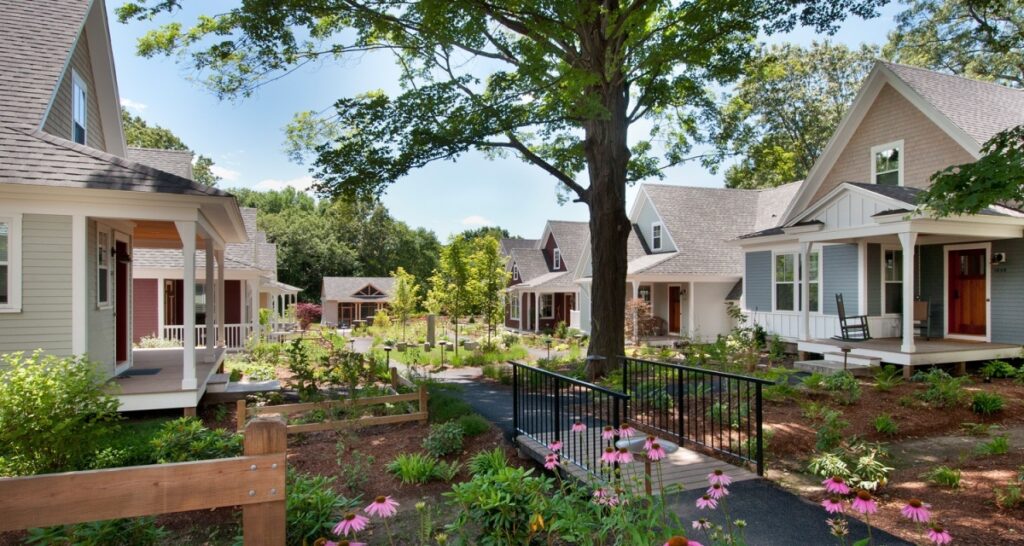What defines a pocket neighborhood?
Pocket neighborhoods are clustered groups of houses or apartments gathered around a shared space — a garden courtyard, a pedestrian street, a series of joined backyards, or a reclaimed alley. They can be in urban, suburban, or rural areas.
Ross Chapin and Jim Soules developed the concept in 1996 in Langley, Washington. They designed the Third Street Cottages, a group of eight small homes clustered around a garden. According to Chapin: “They just seemed like jewel boxes; tucked away off of a busy street. And I said, ‘this is like a pocket neighborhood’.”
Successful pocket neighborhoods start with the central idea of a limited number of dwellings around a shared common. Beyond 8 or 12 units, the clusters should form around separate shared commons, connected by walkways.

Multiple clusters can form a larger aggregate community. These communities connect with and contribute to the character and life of the surrounding area.







